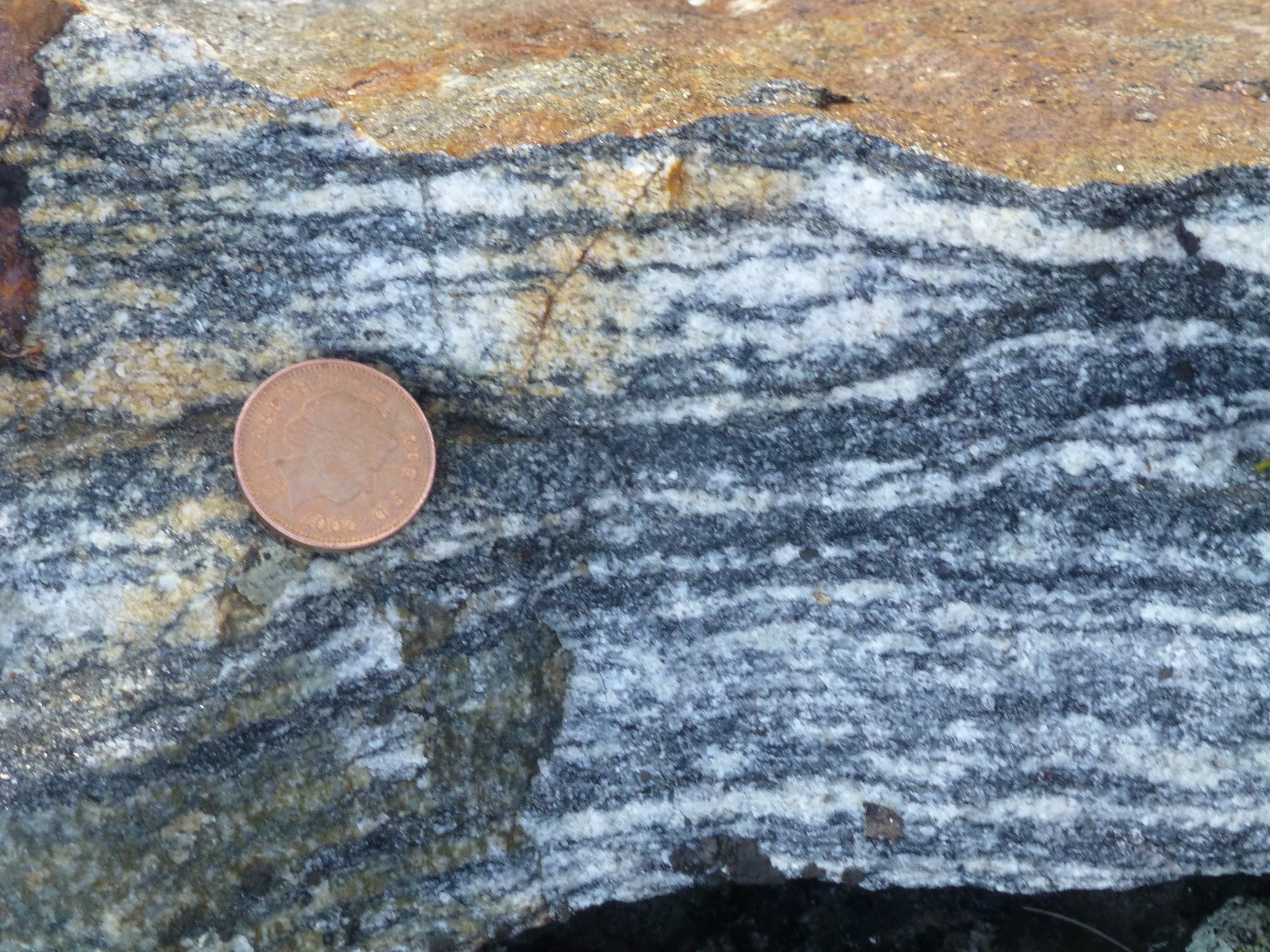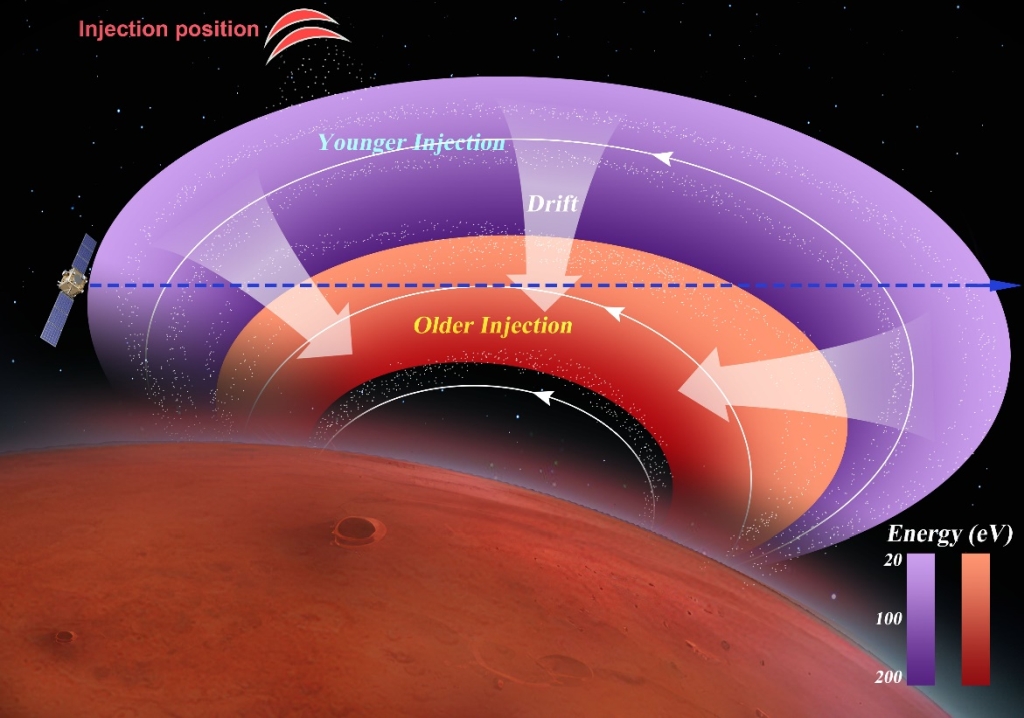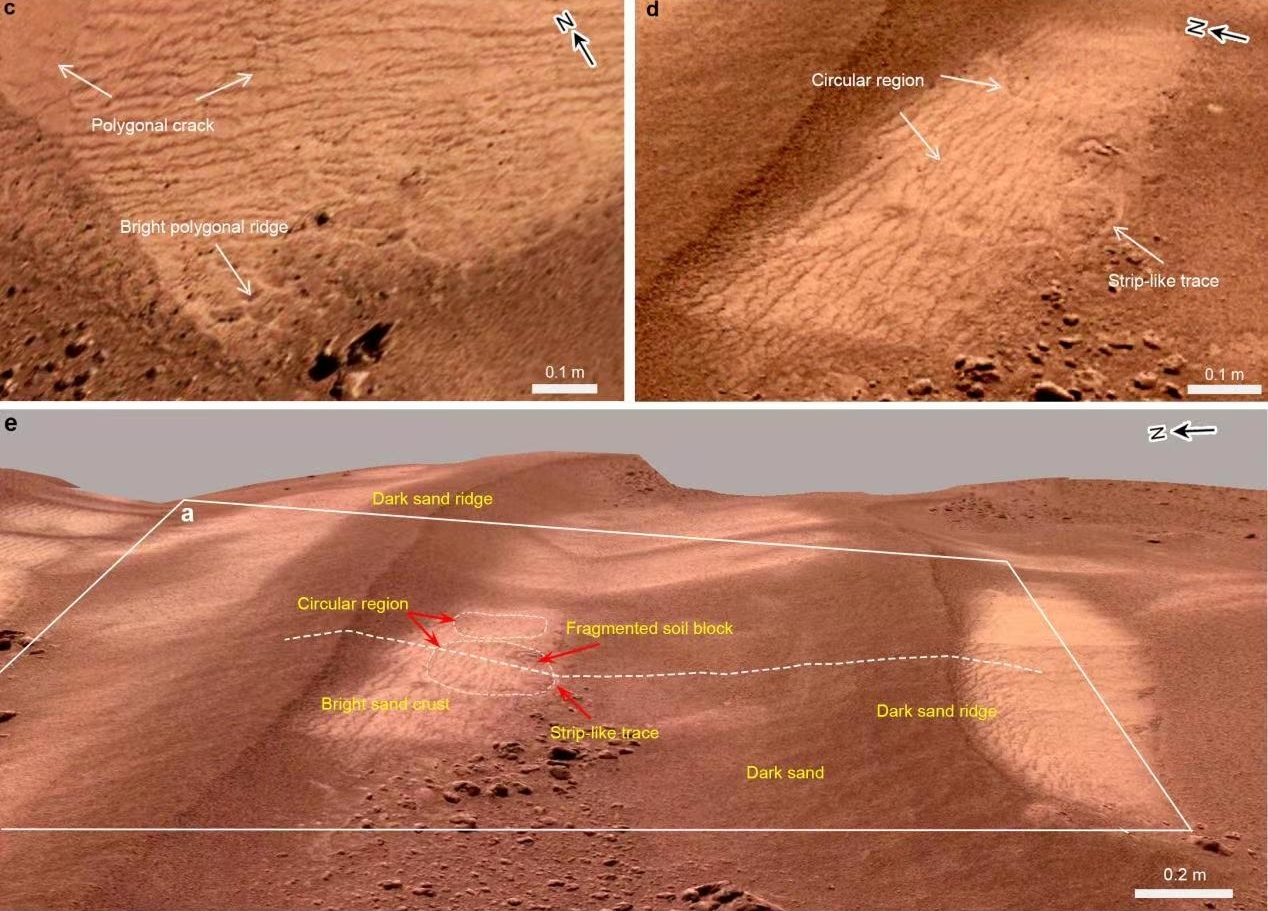During the 2023 Annual Academic meeting, IGG selected 8 outstanding achievements to recognize the remarkable work of researchers over the past year.
1. Technique and Application of Ion Probe Micro-Region Silicon Isotope Analysis
Introduction:Silicon, the most abundant element on Earth, has an isotopic composition that can reflect the environment in which rocks, minerals, and fluids formed and evolved. The traditional silicon isotope analysis method requires a large sample, and it can only obtain mixed isotope information for samples that underwent complex evolution, such as early Earth samples. As an in situ micro-region analysis technology, ion probes can avoid alteration areas and analyze minerals at different stages. Our team has been working on ion probe silicon isotope analysis technology for many years, and we developed high-precision silicon isotope analysis technology for zircon and quartz. On this basis, the team adopted this analysis method to study a series of important geological problems and obtained the following results:
1) The Si-O isotopic characteristics of the oldest rock on earth, the Acasta granitic rocks, shows that there is no evidence of oceanic lithosphere recycling in the rocks 4 billion years ago, implying no plate subduction in the region during this period. (Read More: Earth's Oldest-known Rocks Provide Clues about Early Tectonics)
2) In the world's largest rare earth deposit, the Bayan Obo rare earth niobite deposit, the heterogeneity of the silica isotope composition of quartz indicates that fluorine in the carbonate rock fluid has an important effect on the distribution of silicon in the carbonate rock and then has important significance for rare earth mineralization. (Paper: Large Si isotope fractionation reveals formation mechanism of quartz in silicon-poor carbonatite)
3) The Silica isotope characteristics of TTG zircon in Barberton Area, South Africa, indicate that the source area of TTG formation is influenced not only by seawater but also by fluid released by Komati rock.
4) In-situ Si isotopic characteristics of zircons from 3.8 billion-year-old rocks in the North China Craton indicate the contribution of cyclic materials in the source area.
5) The TTG silicon isotopic characteristics of Jiaodong terrane in North China Craton 29, 2.7, and 2.5 billion years ago indicate that surface material recycling may not be directly related to subduction.

Earth's oldest rock: 4-billion-year-old granitic rock from Northwest Territories, Canada. (Image by Prof. LI Xianhua's group)
2. Material and Energy Exchange in the "Solar Wind-Mars" Coupling System
Introduction:Solar wind material and energy transfer into the Martian space environment through the "solar wind-Mars" interaction. These material and energy are stored, transformed, transferred and dissipated in Martian space in various ways. Some of this energy is transferred to Martian atmospheric particles, driving them to escape.
Focusing on the key transmission process of solar wind material and energy, based on the measurement data of the MAVEN satellite, using the independently developed satellite analysis method and the independently constructed magnetic field model, we have achieved a series of important results this year, as follows:
1) For the first time, It has been found that under certain conditions, the remanent magnetic field of Martian rocks can trap solar wind ions like the dipole magnetic field of the Earth. The work was selected as a highlight article by Nature Communications, and the editors praised the finding that although Mars does not have an endogenous magnetic field, the presence of a magnetic field in its rocks allows physical processes that would normally occur only in the intrinsic magnetosphere to be realized on Mars. (Paper: Detection of magnetospheric ion drift patterns at Mars)
2) It is found that with the increase in solar wind dynamic pressure, the probability of solar wind H+ becoming the main ion component in the Martian magnetotail increases, and the source of the main ion component in the magnetotail and its changing relationship with the external solar wind are systematically revealed. (Paper: Two Types of Martian Magnetotail Current Sheets: MAVEN Observations of Ion Composition)
3) The physical parameters of magnetic field oscillation of the Martian magnetotail are quantitatively obtained, and it is found that the triggering source comes from the solar wind, and the efficiency of magnetic energy oscillation dissipation of the magnetotail is one order of magnitude higher than that of the Earth magnetotail.
4) It is found that, driven by the solar wind, the remaining magnetic field in the southern hemisphere of Mars will form an "unstable" micro-magnetosphere, while the northern hemisphere will form an "induced magnetosphere" dominated by magnetic pressure.
5) It is found that the enhancement of solar wind dynamic pressure will simultaneously lead to the brightening of proton auroras on Mars and the intensification of ion loss in Mars’ atmosphere. A new method is proposed to estimate ion escape from Mars by auroral observation.
The results of this study are of great scientific significance for understanding the space dynamics of Mars, understanding the escape mechanism of atmospheric particles on Mars, and understanding the evolution of the habitable environment on Earth.

Sketch of the wedge-like dispersions of ions within the Martian crustal fields.(Image by Associate Professor Zhang Chi's Group)
3. New Implications of Chang 'E-5 Samples for the Late Evolution of the Moon
Introduction:The lunar soil samples of Chang 'E-5 provide important materials for the study of the late evolution of the moon. The young basalt returned not only carries information about the moon's interior but also records the history of space weathering as it evolved from basalt to lunar soil. Around this scientific problem, the research team obtained two new understandings:
1) Using the characteristics of the composition changes of plagioclase and pyroxene, it was confirmed that Chang 'E-5 basalt came from a low-titanium non-KLIP source area and calmed the dispute between "high titanium" and "low titanium" basalt. On this basis, the research team estimated the eruption size of this late volcanic activity, which may have a relatively deep source and whose source area is not too hot. The results show that there was still a large-scale magma eruption on the moon about 2 billion years ago, and it is found that the scale of lunar volcanic eruption from the early to the late period is not a continuous decrease but an intermittent eruption, which provides a key parameter for the lunar thermal evolution model.
2) Spectroscopic analysis of the lunar soil by infrared spectroscopy showed that Chang 'E-5 lunar soil matured faster than expected, indicating that the lunar soil had experienced strong space weathering and probably contained solar wind-caused water. The research team selected different kinds of minerals, rock debris, and impact glass from a large number of lunar soils and found that impact glass is an important carrier for storing solar wind-induced water, which has the ability to maintain the lunar surface water cycle. Based on this, a lunar surface water cycle model is proposed to quantify the surface water content, which lays the foundation for future in-situ water resource utilization. The research results have been reported by many mainstream media at home and abroad, such as the China Journal of Science, Xinhua News Agency, and the Wall Street Journal, and quoted in many published articles, promoting the development of planetary science in China.
4. Evidence of Modern Water Activity Found on the Surface of Sand Dunes at Low Latitudes on Mars
Introduction:On April 25, 2023, Beijing time, the international authoritative academic journal "Science Advances" released an important research result from China's Tianwen No. 1. The study, led by a team led by Qin Xiaoguang of the Institute of Geology and Earth Sciences of the Chinese Academy of Sciences, found the first observational evidence of liquid water in the low latitudes of Mars, proving that on modern Mars, water does not exist only in the form of solid or gas but also in the form of liquid under the right conditions. Through the analysis of spectral data, the research team found that there are surface features such as cracking, crusting, agglomeration, and polygonal ridges on the surface of sand dunes in the landing area of Zhurong and that these surface features are rich in water-containing minerals such as hydrous sulfate and opal. Combined with data from the Mars meteorological instrument carried by Zhurong, meteorological data from other parts of Mars, and crater dating, it is inferred that these surface features formed 400,000 to 1.4 million years ago and are related to the involvement of melting salt water. The finding fills a gap in observational evidence for liquid water at low latitudes on Mars, revealing the existence of wetter conditions in the modern Martian climate at lower latitudes, which are relatively warm and have more favorable surface temperatures. This finding has important implications for understanding the history of Martian climate evolution. (Read More:Tianwen-1: Zhurong Rover Finds Evidence of Water at Low Latitudes on Modern Mars)

Water traces on bright sand dunes. (c) Enlarged photo showing polygonal cracks and bright polygonal ridges. (d) Enlarged photo showing circular region with the strip-like trace as a part. (e) NaTeCam 3D image of an interdune depression between two dark longitudinal dunes. (Image by Professor Qin Xiaoguang's Group)
5. Breakthrough in Key Techniques and Applications of Wave Equation Fine Detection
Introduction:The exploration and development of oil, gas, coal, and other resources require higher imaging accuracy of underground structures, and traditional seismic detection methods show more limitations. In recent years, seismic imaging methods based on the wave equation have gained widespread attention in the field of exploration geophysics. This method has the potential to break through the limitation of traditional seismic detection technology by using waveform fitting and optimization algorithms for the iterative inversion of underground medium models.
In this study, based on the generalized standard linear solid model and the Lagrange multiplier method, the inversion theory and method of the three-dimensional viscoelastic wave equation are established, and the gradient of elastic parameters and quality factors are derived. The boundary storage method and adjoint memory variables are used to compute the gradient with high efficiency and low memory. The wave-number domain fidelity wave field separation technique is used to decouple the S-P wave and suppress the mutual interference of the S-P wave. A multi-objective function inversion method based on waveform, root-mean-square amplitude, and center frequency is developed to reduce the multiple solutions caused by parameter coupling.
In this study, an inversion of the viscoelastic wave equation was applied to distributed fiber surface wave seismic data. The related paper was selected as "Featured" by the Geophysics Journal. For the first time in China, wave equation inversion technology is applied to the 3D seismic data of coal mine roadways, and the 3D spatial distribution of coal seam roof and floor, waste separation, and faults is scanned with high precision, which can solve the problem of transparency of the coal face and ensure the safe production and efficient mining of coal mines. From 2020 to 2023, it carried out promotion and industrial application in many coal mining faces in China, increasing the social and economic benefits by 713.222 million yuan from 2022 to 2023, and the relevant achievements will be rated as internationally advanced by the China Safety Production Association, winning the first prize of the fourth Science and Technology Progress of the China Safety Production Association.
6. The key Theory and Technology of Gas Hydrate Exploitation
Introduction:Natural gas hydrate is a promising clean energy source, but it has not been commercialized yet. The long-term development of hydrates faces many challenges, including where the hydrates are, how the temperature/phase state evolves, what the productivity is, and how to control the temperature and prevent secondary hydrates. In response to these challenges, guided by theory, technology, and application, the following results have been achieved:
1) In terms of hydrate reservoir exploration, a multi-head deep learning method is proposed, which can eliminate the thin layer tuning effect and clearly identify the hydrate structural boundary and elastic parameters.
2) A special low-temperature test platform for hydrate saturation, porosity, and permeability is developed to achieve more accurate tests.
3) Based on the gas/water two-phase molecular simulation, the formation mechanism of the water lock and the deformation water layer model are proposed, and a more accurate gas/water phase infiltration model is obtained.
4) IGG-Hydrate calculation software is developed to realize heat-fluid-structure coupling simulation. The concept of a coupled heat flow control mode for hydrate development is put forward, and it is clear that hydrate development in the South China Sea is in heat control mode, and heat recharge is the key.
5) The in-situ heat replenishment and pressure relief filling method were proposed, and in-situ heat replenishment and slow-release composite materials were successfully developed to control reservoir heat replenishment time, and field tests were successfully carried out at the Qilian Mountain Hydrate test site.
7. Mars Multi-Physical Field Exploration and Scientific Data Interpretation
Introduction:Mars multi-physics exploration is a key method to study the internal structure and evolution history of Mars. Based on Zhurong magnetic field and vehicle-mounted radar data, INSIGHT fire earthquake data, MAVEN satellite data, and SHARAD orbit radar data, the research team carried out multi-physical field comprehensive exploration and research from the perspective of Mars surface and space magnetic fields, shallow underground structures, etc. The main innovations are as follows:
1) The magnetometer was demarcated along the orbit by the joint rotation of the Zhurong rover and the mast, and the separation of the Martian magnetic field and the rover interference field was realized, making the accuracy of the multi-point in-situ measurement of the Martian surface reach the order of nT. The detection results show that the magnetic field is extremely weak in the Zhurong patrol area in the southern region of Mars Utopia, and it shows a spatial change scale of 100 meters, indicating that the Utopian basin where Zhurong landed was completely demagnetized by the impact and has not been re-magnetized since. This has important scientific implications for understanding the evolution of the Martian magnetic field, and the research results are published in Nature Astronomy and Science China: Earth Sciences.
2) The temporal and spatial variation characteristics of the low-frequency radar spectrum of Zhurong are extracted, and it is found that there are many discrete vertical low-frequency bands in the detection profile, which is consistent with the spatial distribution characteristics of polygonal landforms widely existing on the Martian ground today. Combined with remote sensing and geological data from the landing area, it is suggested that these newly discovered structures may be polygonal landforms buried 35 meters underground. The study, published in Nature Astronomy, provides important evidence for further understanding of the paleoenvironment and paleoclimate evolution of the landing area.
In addition, the research team studied the genetic mechanism of UHF Mars earthquakes based on finite element thermodynamic coupling simulation, analyzed the influence of Mars surface temperature on natural vibration frequency based on the finite element simulation of insight probe structure natural vibration, and explored the effect of Mars magnetosphere dynamics on ion escape combined with satellite observation and numerical simulation. Through SHARAD data processing and forward modeling, it is verified that dielectric loss media are widely distributed in the Antarctic ice sheet of Mars, and the non-uniformity of the composition of the Antarctic ice sheet is constrained. In short, the research team carried out a series of studies from the perspective of multiple physical fields such as magnetic fields, earthquakes, and radar, providing key information for revealing the evolution history of Mars.
8. Isotopic Chronology of Medium-Low Temperature Geological Processes: Technological Innovations and Applications
Introduction:Isotope chronology is one of the most fundamental fields in earth science, providing quantitative constraints for determining the occurrence and duration of geological processes in depth. Compared with high temperature processes, dating middle- and low-temperature geological processes has always been a difficult problem in isotope chronology. The research team has carried out a series of technical innovations for the two most important directions in middle- and low-temperature geological processes: hydrothermal mineralization processes and sedimentary processes. The main achievements are as follows:
1) The laser Rb-Sr dating technology has been established to provide technical support for middle- and low-temperature hydrothermal deposit dating.
2) The laser micro-zone Lu-Hf dating of yttrium phosphorite, apatite, and carbonate U-Pb dating techniques was established, providing technical support for the dating of sedimentary rocks such as phosphorite and limestone.
3) The Re-Os isotope analysis technology for organic-rich sedimentary rocks and their derivatives, such as asphalt was optimized, and the dating accuracy was controlled at a level of better than 2%. It also meets the tracing requirements of Os isotope stratigraphy and reveals the existence of oxygen weathering in the early middle Proterozoic. The research and development of these analysis techniques not only provide an international high-level analysis technology platform for mineral deposit research but also provide technical support for the inversion of supergene sedimentary environments and global sequence correlation.